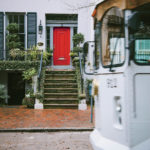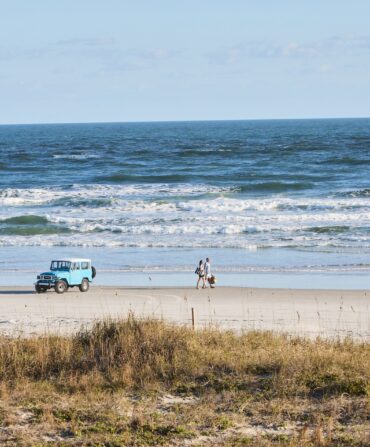City Portrait
Savannah’s Moment
No living museum, Georgia’s colonial capital is charging into the twenty-first century and beyond

Photo: Amy Dickerson
My father calls it the Greatest Walk in America.
“Park your car at Forsyth Park,” he says, referring to the Spanish-mossed jewel of Savannah, the thirty-acre antebellum landmark on the southern edge of the historic district. After pausing at the wedding-cake fountain with the spouting Tritons, head north along Bull Street to the river.
Turn right when you hit the cobblestones on River Street, and then right again when you hit the Waving Girl, the graceful tribute to lovelorn icon Florence Martus sculpted by Felix de Weldon, the artist behind the Iwo Jima Memorial. Weaving south through the landscaped heraldry of Savannah’s squares—Washington, Greene, Oglethorpe, Lafayette—make your way back to the Confederate Monument in the middle of Forsyth Park.
“I bet I’ve sent forty people on that walk over the years,” says my eighty-two-year-old father, a fourth-generation native who so loves talking up his beloved hometown to unsuspecting strangers, seatmates, even bathroom-stall neighbors, that we nicknamed him a professional Savannahian.
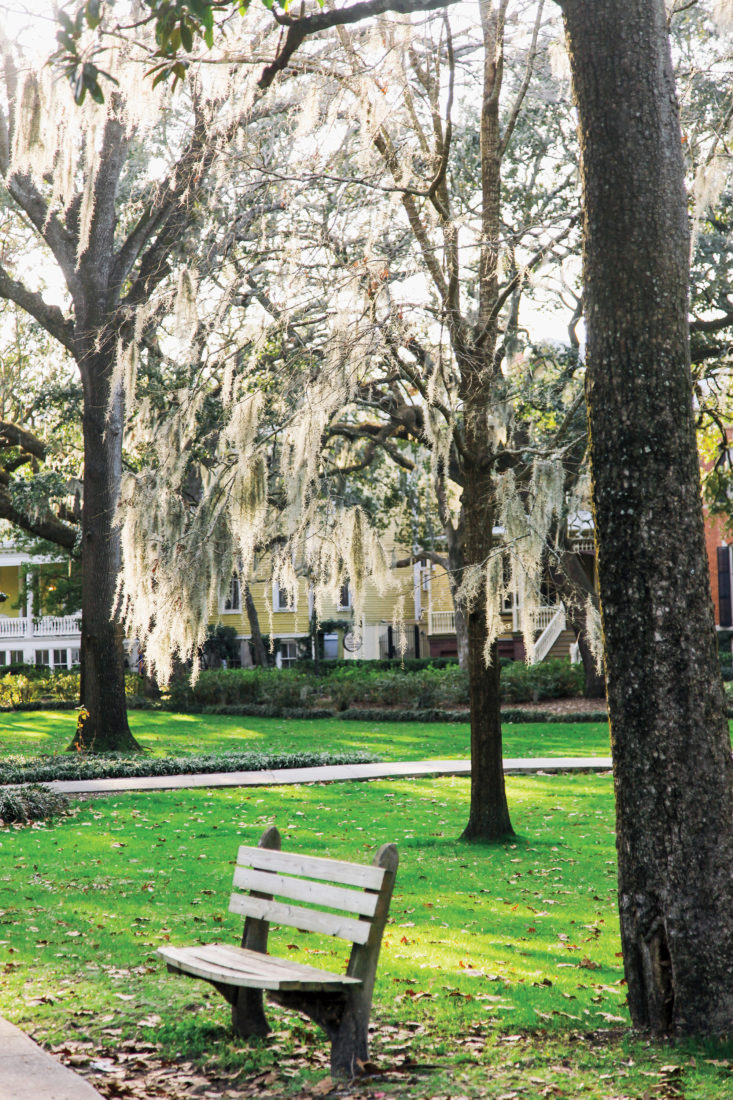
Photo: Amy Dickerson
A bench in Forsyth Park.
“It’s urban,” he says of his route. “It’s neighborly. It’s historic. And you could do the same walk for the last two hundred and fifty years. It changes a little, but it doesn’t change philosophically.”
And that’s where I’d like to differ.
I was born in Savannah in 1964 and graduated from high school there in 1983. All that time, the place Margaret Mitchell called the “gently mannered city by the sea” was going through its slow but steady debutante blossoming as a pioneer of historic preservation and the historic backdrop of choice for Hollywood (the original Roots was a notable milestone). The thing everybody said about Savannah was that it didn’t change.
It’s always been done this way. It always will.
That applied to the beauty, the history, the charm. But it also applied to the racial fault lines, the closed-mindedness, the magnolia-scented whiff of condescension toward ladies, lefties, Jews, gays, outsiders of any kind, and, on certain fall weekends, Georgia Tech fans. The One Unquestioned Gospel of Savannah was that its True Indelible Nature had been forever inscribed in stone on that day in February 1733 when gentleman-reformer James Oglethorpe stepped onto the bluff of the Savannah River and began building the new colony.
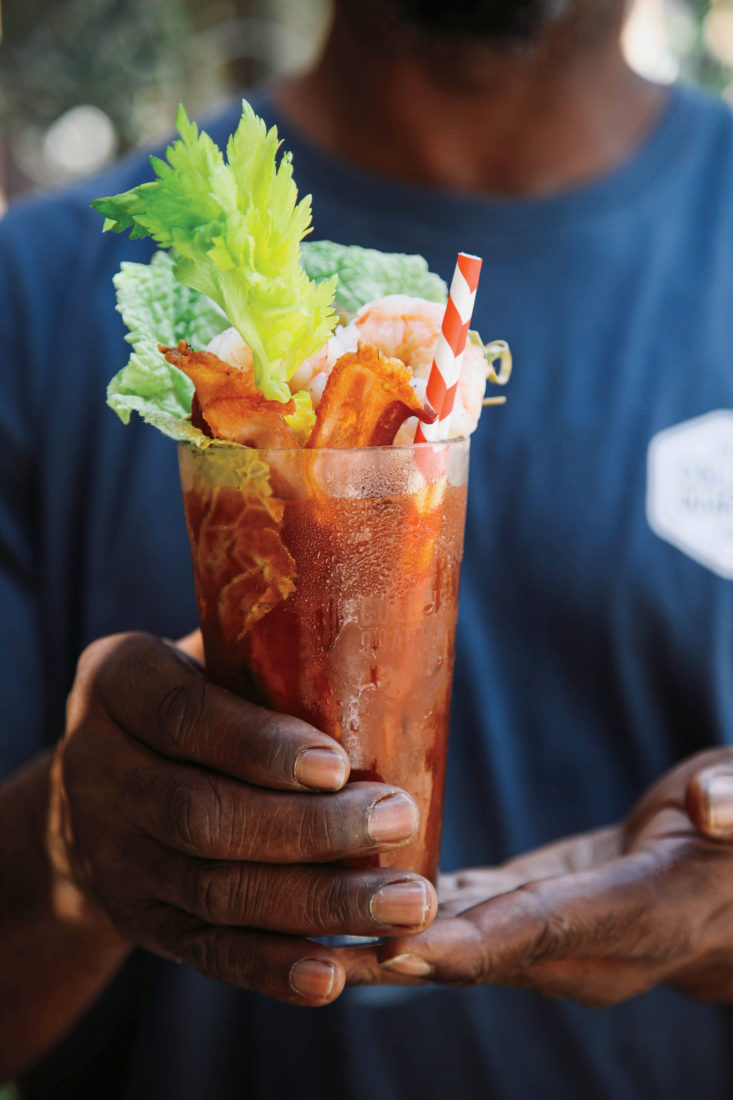
Photo: Amy Dickerson
The collins Quarters Bloody Mary.
But here’s the thing most people never mention about Savannah: It turns out that True Indelible Nature wasn’t indelible at all. It was adaptable, just like everything else in human society. In the last twenty years, Savannah has experienced a remarkable pace of transformation that has slowly chipped away at much of the bedrock of its previous identity.
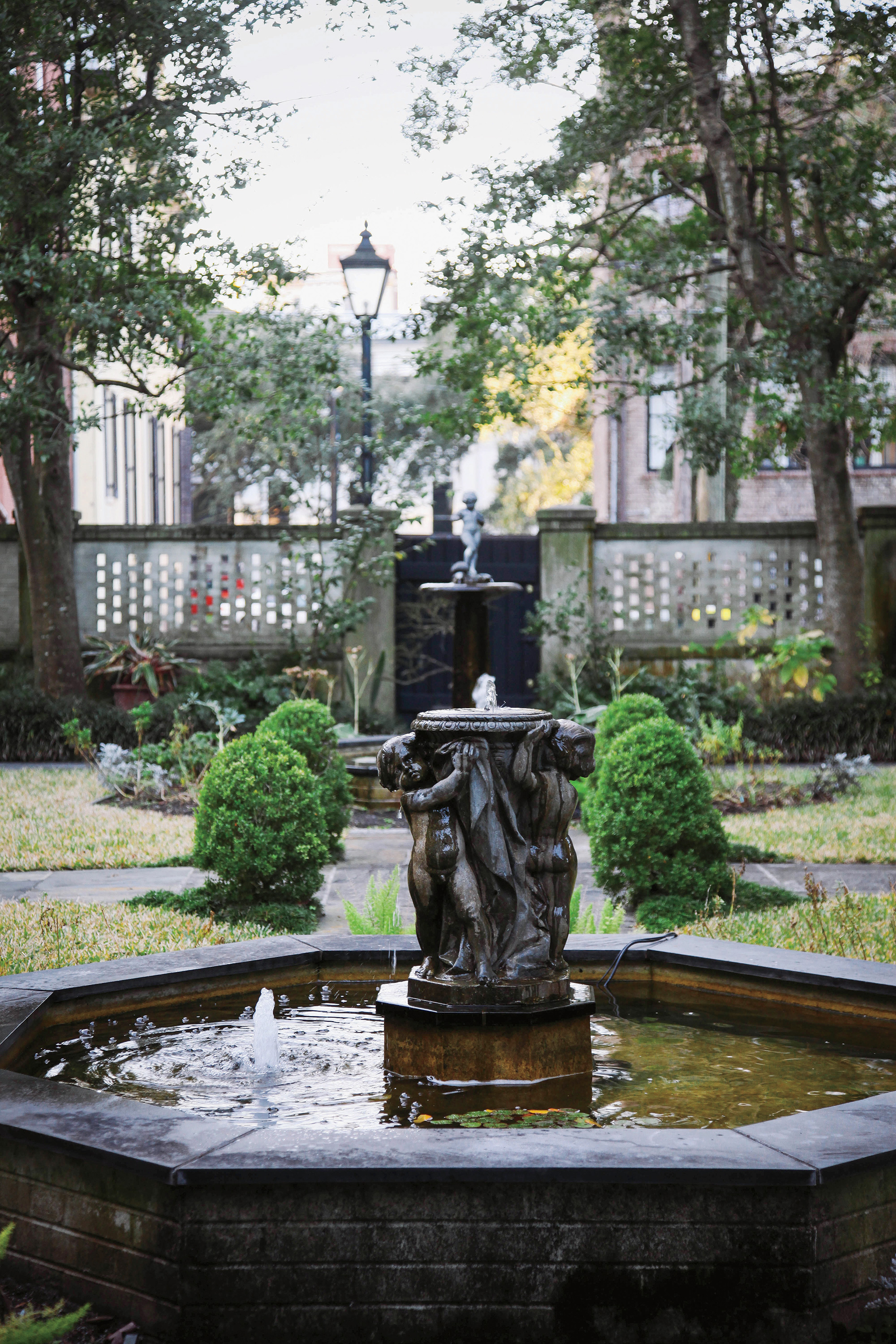
Amy Dickerson
The story of Savannah today is not its unchangingness. The story is its changeability.
Let’s consider the three planks of the Gospel of Savannah.
1. Savannah has always been the same.
On a visit in 1946, Lady Waldorf Astor said, “Savannah is very much like a beautiful woman with a dirty face.” With a little painting and cleaning, she went on, “your city…could be one of the most beauti-
ful in America.”
She got her wish. Within a few years, Savannah became a model for historic preservation in the United States. Much of the city’s eighteenth- and nineteenth-century building stock was protected in the coming decades, including the home of Girl Scouts founder Juliette Gordon Low, the Owens-Thomas House, and the Davenport House.
But the little-acknowledged truth is that by the 1970s, white flight from downtown, coupled with the parallel shift in jobs and retail to the suburbs and islands, left Savannah’s historic core a dilapidated ghost town dotted with a few well-preserved house museums.
The real difference maker in today’s thriving city was SCAD, the Savannah College of Art and Design, founded in 1978 by outsiders Paula Wallace, Richard G. Rowan, and Mary L. and Paul E. Poetter. Sniffed at by locals and derided as a “pariah” (“The Art College That Ate Savannah,” trumpeted the New York Times), SCAD can safely be considered today the savior of downtown, having bought and restored more than seventy buildings.

Amy Dickerson
Even more important, just enough SCAD grads have stuck around over the years, constituting the first genuine creative class in the city’s history. Any number of cafés, galleries, music venues, and jewelry nooks, as well as a regular First Friday Art March, can be traced directly to the once-derided idea of an art college in a place long known for watercolors and macramé. Savannah’s hipster class has gotten so big it’s even burst into new neighborhoods, like the Starland District, just south of Forsyth Park, and attracted celebrity chefs from afar, like Mashama Bailey, of the Grey, Hugh Acheson, who started the Florence, and now the Charleston, South Carolina, locavore Sean Brock, who’s bringing his Husk to town.
Savannah still loves its Ye Olde Time flavors, but now change is on the menu, too.
2. Savannah is isolated.
When my mother, a native Baltimorean, moved to Savannah in the late 1950s, a friend of my grandmother’s told her pointedly, “You’ll never be considered a native.” Your family could have lived here since Oglethorpe, she went on, your mother could have been born here, been married here, and gotten pregnant here, but if in her ninth month, she went to Effingham County for a picnic and delivered you there, and then you returned and lived your entire life here, your obituary would still begin, “Though not a native Savannahian…”
That sense of exclusivity was always a point of pride among Savannahians. As one hostess pointed out to the New York writer John Berendt when he first showed up in the “Coastal Empire” in the 1980s, “The whole of Savannah is an oasis. We are isolated. Gloriously isolated!”
Today that’s simply not true anymore. Part of the shift is technology. Cable television, overnight delivery, the Internet, all have made daily life less restricted by place. Part of it’s transportation. When I was a child, we used to joke about Savannah, “You can’t get to heaven without changing planes in Atlanta.” Today there are nonstop flights to twenty-two cities, including Toronto. The once absurdly titled Savannah Hilton Head International Airport finally kinda-sorta lives up to its name!
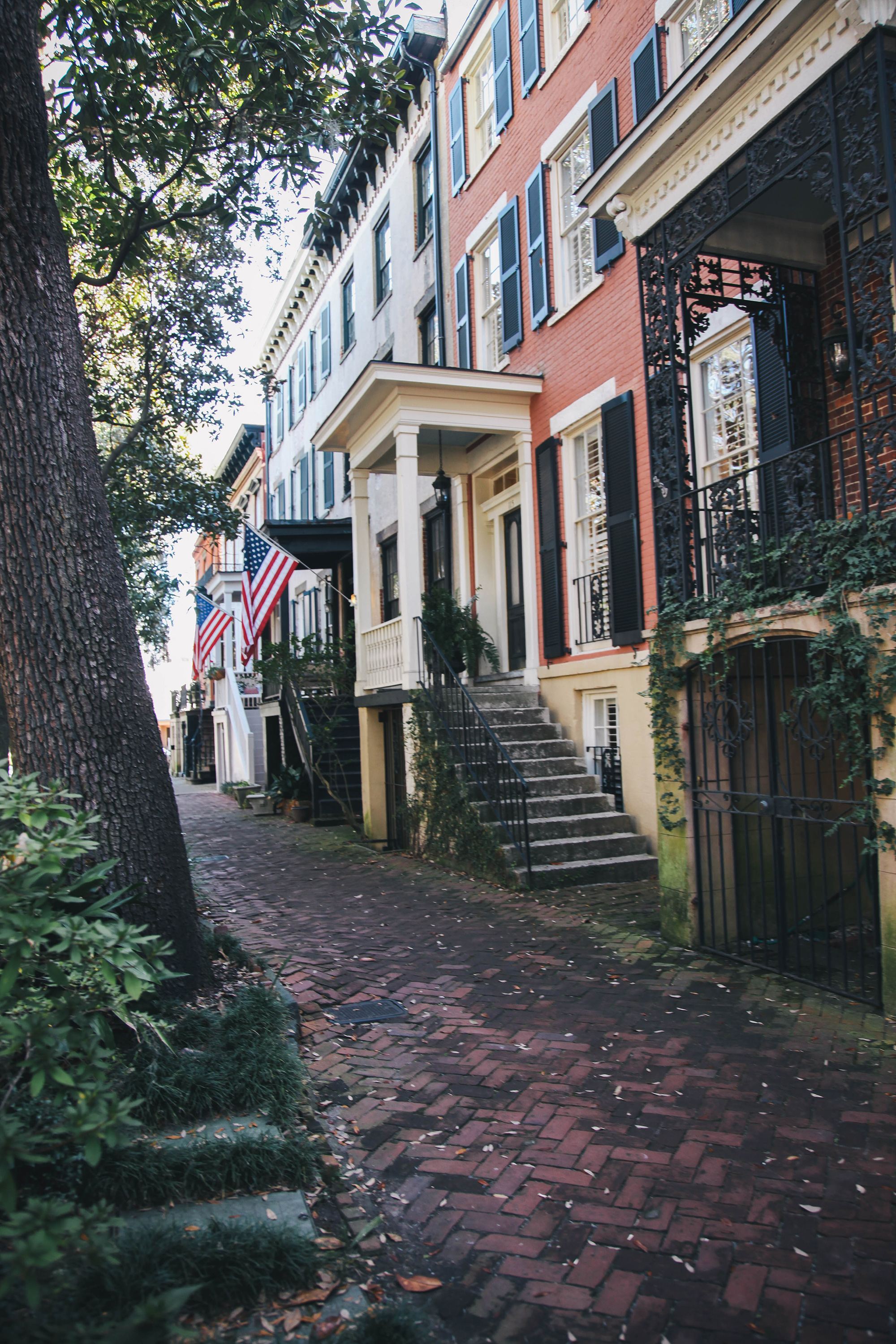
Amy Dickerson
All that access has brought with it new blood, new ways of doing things, and, perhaps most important, new money. Look around; often the shiniest buildings and the boards of the most innovative nonprofits are bursting with names that were nowhere to be found in the city’s Social Register that Lady Astor would have recognized.
Savannah may still be an oasis, but it’s isolated no more.
3. Savannah is narrow-minded.
For most of the last century, the short list of most famous Savannahians was largely unchanged: Johnny Mercer, Flannery O’Connor, Conrad Aiken. Nowadays two new names have joined the list. The first falls into that category of outsiders that locals stuck up their noses at: Paula Deen. (She was born in Albany, y’all.) The second is a figure no one saw coming, but who single-handedly embodied all the change Savannah now represents.
The late Lady Chablis.
Born Benjamin Edward Knox in Quincy, Florida, in 1957, she took the name Chablis as a teenager. A little-known nightclub performer making $250 a week in the late eighties, she became the breakout star of Berendt’s surprise blockbuster, Midnight in the Garden of Good and Evil. So much of a star that when Clint Eastwood announced he would make a movie out of the book, Chablis announced, “If I’m not cast as myself in that movie, there won’t be a movie.”
There was a movie. Chablis played herself.
I have a theory that any book that becomes a cultural phenomenon taps into something larger in society. In the case of The Da Vinci Code, it was the clergy sex abuse scandal and the weakening of the Catholic Church. In the case of Tuesdays with Morrie, it was baby boomers just facing their mortality. In the case of Midnight, the deeper cultural change was a cresting wave of tolerance toward homosexuality and gender fluidity. The central story in the book is a gay murder, the most popular character a transvestite. Savannah, long known for trailing the world, actually led the world in this arena.
It’s easy to forget it’s been almost a quarter of a century since Midnight was published; evidence of the open-mindedness the book embodies is everywhere. There are almost a dozen gay bars; there have been three African American mayors since 1996; and, most recently, there was a rallying around a mosque after a threat.
Savannah is still in South Georgia, of course; there’s no reason to get carried away. But the city has come further in embracing the world than anyone would have predicted a generation ago. The Spanish moss, the charm, and, yes, even my father’s favorite walking route are still there, but it’s time to start thinking of Savannah less as a place that embodies the seventeenth century and more as one that represents the twenty-first.
One small mark of that evolution: I recently asked my dad what is the biggest change he’s experienced in the city in his eight decades of living here. His answer: “You used to have to say you were from Savannah, Georgia. Now you just say you’re from Savannah.”
Hear that, Savannah, you got your wish. Everyone knows your name.


